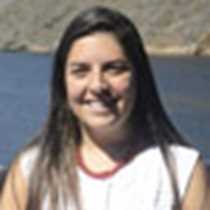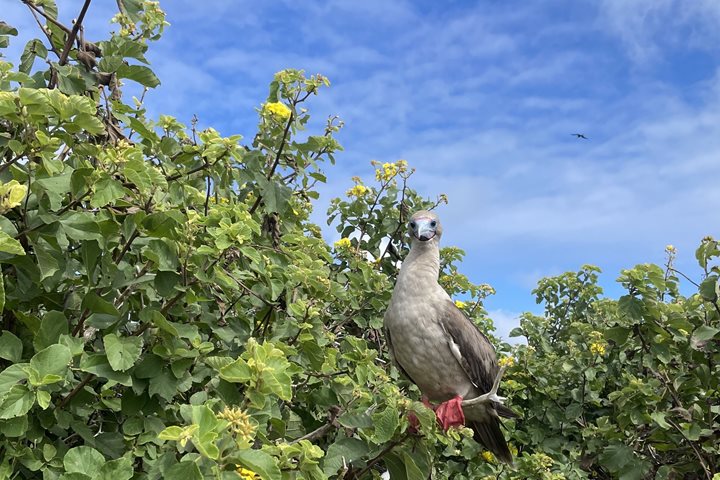Today we officially started our expedition in one of the oldest islands of the Galápagos; Española Island is estimated to be 4.5 million years old, far away from the hotspot and almost totally flat due to the erosion from the wind and waves. This place is home to the only tropical albatrosses in the world; the waved albatross is endemic to the island of Española, but we can only find them here from April to middle January when they have returned from their migration. Even though our guests couldn’t see them, we learned about them and their amazing behaviors. In the morning we woke up anchored in Gardner bay. We had a delicious breakfast followed by our snorkeling safety talk. The morning was all about water activities, and our guests were able to decide if they wanted to go deep water snorkeling, or if they preferred to go the beach for some snorkeling lessons. Both options offered sightings of incredible fish, sharks, sea turtles, and lots of sea lions.
After lunch, guests had the first opportunity of the week to learn some photo tricks during a presentation by our photo instructor. This was followed by an oceanography talk, to better understand the underwater world in the Galapagos, and what draws species to the islands that we generally find in totally different environments, like penguins, which are the only penguins in the northern hemisphere, and the marine bird mentioned before, the waved albatross.
In the afternoon we visited Punta Suarez, still in Española but in a different location. Our guests were thrilled with the marine iguanas, which in this time of the year are called “Christmas iguanas” due to their red and green coloration. We also observed large colonies of masked boobies, nesting and mating, as well as Darwin finches, Galapagos doves, blue-footed boobies, the biggest predator in the Galapagos which is the Galapagos hawk, and many other unique species. Española is definitely one of the jewels of the crown, what an amazing day we had!










